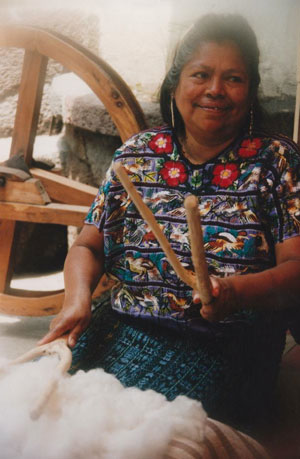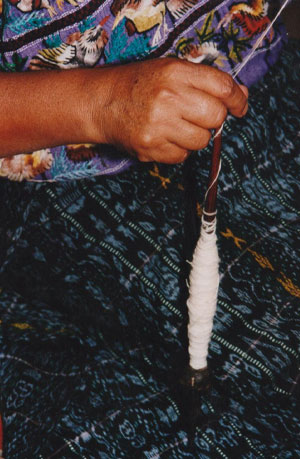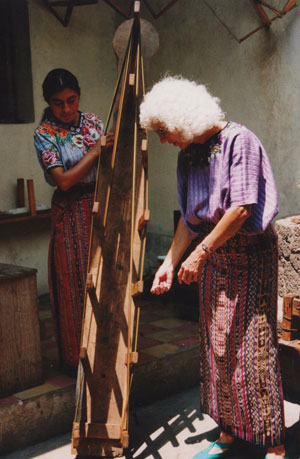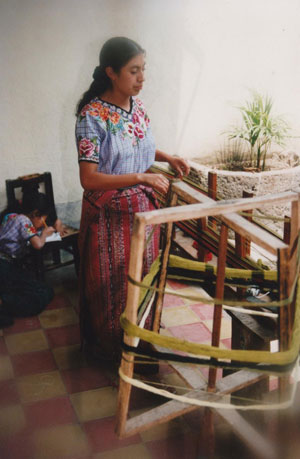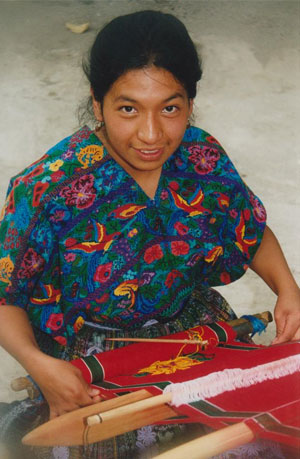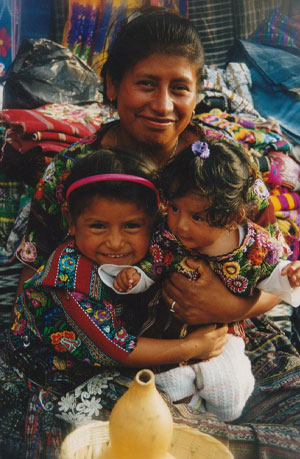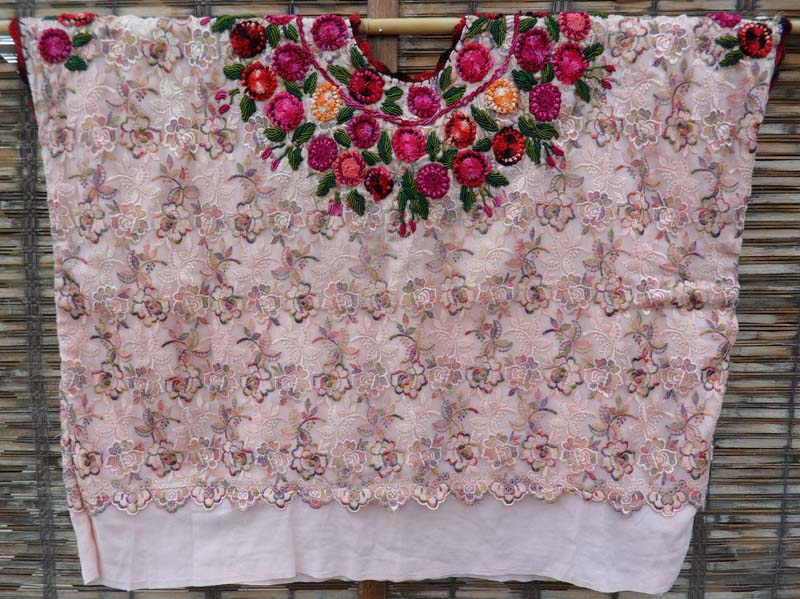
Huipil (pronounced wee-peel) is the Spanish word for the traditional blouses worn by Mayan women for many centuries. They are still prominent in Guatemalan and a few other Latin American cultures today. Clothing is of great cultural significance to the Mayan, and the huipil is the most prevalent part of a woman’s traditional dress. The weave or design of each huipil can identify her individual personality and the village she is from, as well as her marital, social, wealth, and religious status. The patterns and meanings on the huipil have remained the same over the years since the ancient Maya civilization. It is a sign of respect to wear a huipil design from another community when visiting their village, but it is not common to wear others’ designs within one’s own village. Women may own several huipils, both for everyday use as well as ceremonial purposes or special occasions.
Guatemalan women have hand-woven their clothing on a back strap loom for centuries and pass along the tradition through the years. They start with raw wool or cotton that they wash, comb and spin. Then they stretch the threads along a warping board and attach it to the loom. The designs are created by weaving colored yarns into the cloth as it is being woven. The process is called brocade, which is different than embroidery where the colored threads are stitched into the completed garment. The weaver sometimes will use natural dyes, such as flowers, plants, insects, bark, or berries but has recently introduced rayon and silk materials into some of the textiles. Before the 1950’s coyuscate, naturally brown cotton was grown in Guatemala and was commonly used to make huipils.
When a huipil is finished it is a work of art and can sometimes take months to complete. If it is made well it can last up to 30 years or so and often times will be recycled into a handbag, quilt, or other types of craft and sold at the market after it has been worn. Artisans in Guatemala make and sell huipils to help to support their families and improve their living conditions, but they are also an important part of the culture and are worn widely among the natives of Guatemala. They will continue to reflect femininity, identity, and tradition through the generations.

